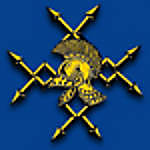Continuing on from last week, I prepped the rails and determined which sides were going where and filled in the holes on the exposed ends of both the long and short rails with putty and sanded it down. Since the rails "butt" to each other and are clamped together with brace plates on either sides, it's necessary to thread the rails into position first and then join them together. The longer rails require a little more care to thread them into place and not stress the clamps in the process. Originally I thought I'd have to trim some of the rocks down but that ultimately didn't prove necessary. The clamps are specifically designed to fit on only one side due to the cut-outs being wide enough for either 1 rail spike or 2 depending on the outer or inner sides. Fortunately the Trumpeter design aids with this as one of the clamps has pins that go all the way through both rails and, just like the bolts on the real thing, serve as the contact point for the mating clamp on the other side. I used some liquid glue to secure these without any major issues, just a little pressure with some tweezers to get them to go together is all that's necessary.


The rails were then brush-painted with non-buffing Metalizer Gunmetal.

The rail surfaces were dry-brushed with Steel to simulate metal-on-metal contact wear.

Then a wash of Rust was applied gently to all the rail surfaces and once dry, the rails were dry-brushed with Burnt Umber to complete their look.


Attention turned now back to the rail car and it's paint/finish. I started by applying a primer/pre-shade coat of Italian Dark Brown to both the car and turret.

Next came the base coat which was really two coats...the first pass being 90/10 Dunkelgelb/Light Gray and the follow-up 80/20 Dunkelgelb/Light Gray.

The camo pattern was next. I used the included color plate as a guide only and applied the pattern free-hand. The red-brown is a 50-50 mix of Leather/Military Brown and was laid down first. Then the olivegrun (70/30 Russian Armor Green/Panzerschwarzgrau) stripes were applied. I did some light touch-up of the over spray with the 80/20 Dunkel mix from the previous step and then, holding the AB at a distance of about 12 inches or so, sprayed a light misting coat of the same 80/20 Dunkel over the whole pattern to tie it all together. Since this is a rail-based vehicle, the weathering will tend to be darker than normal, so I wanted to have the "pre-fade" effect in place first before I got to that stage.

And just to see how it all looks together at this point...

Next up will be finishing the details on the car, the Future coats, the simple markings, and the weathering can begin.




















































